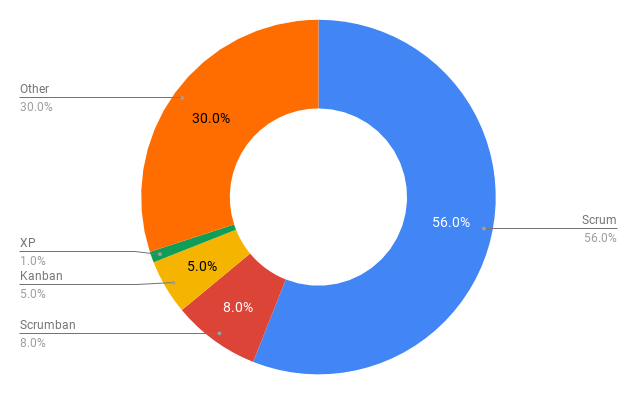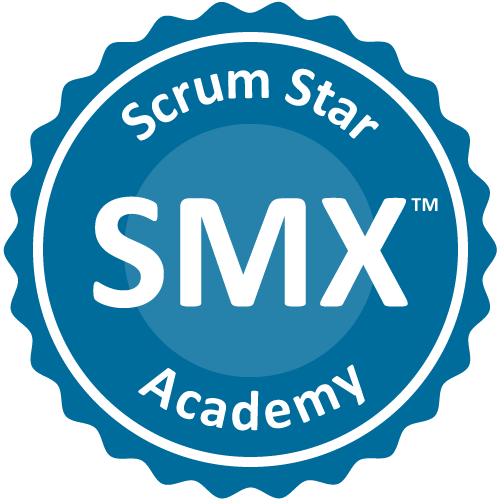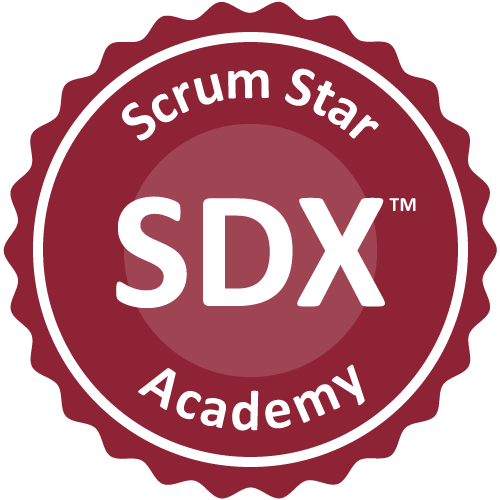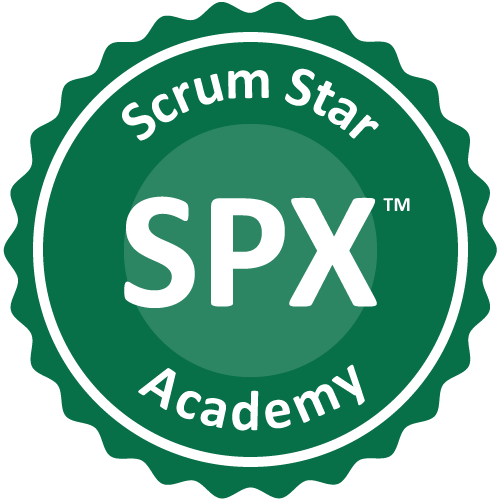What's More Popular Than Scrum?
Agile is a blanket term that describes a set of software development principles. Although the principles themselves are helpful, they are theoretical and they don't provide the structure that is necessary to run real-world projects. To find the practical guidelines we need, we have to turn to the frameworks or methodologies that are based on the Agile principles.
Although many different methodologies exist, very few of them are in use today. Let's take a look at the latest industry trends and see what the most popular options are(1):

Scrum
Market share: 56%
As we can see from the statistical data, Scrum is the most popular Agile framework today. It describes a work pattern for teams of 3 to 9 developers performing the work on the product; a Product Owner overseeing the business aspects of the product; and a Scrum Master responsible for the implementation of the Scrum framework.
Scrum was created in 1995 by Ken Schwaber and Jeff Sutherland.
Scrumban
Market share: 8%
Scrumban is a hybrid of Scrum and Kanban. Unlike pure Scrum, it doesn't require any team roles or a specific number of team members. The work is performed in short iterations and monitored with the help of visual aids like a kanban board.
Scrumban was introduced in 2009 by Corey Ladas in his book "Scrumban: Essays on Kanban Systems for Lean Software Development."
Kanban
Market share: 5%
Kanban means a signboard or billboard in Japanese (看板.) It can help improve work efficiency by limiting work in progress according to the capacity of the team. Work items are usually visualized on a kanban board to give a clear overview of the process.
The Kanban methodology for software development was derived from a lean manufacturing process developed by Toyota in the 1940s.
XP (Extreme Programming)
Market share: 1%
Extreme Programming is a methodology that aims to improve productivity and responsiveness to customer requirements. XP describes a number of development activities, principles, and values that delve deeper into the specifics of software development most other Agile frameworks.
XP was created by Kent Beck in 1999.
Trends
If we look at the Google trends for the last 10 years, we can see that Kanban and XP have not made much upward progress, while Scrum has been steadily climbing.

Honorary mentions
The methodologies mentioned below account for less than 1% of the global Agile usage, so we'll just describe them briefly.
LSD (Lean Software Development)
This methodology is an adaptation of the Toyota lean manufacturing principles to software development. It was introduced in 2009 by Marry and Tom Poppendieck in their book "Lean Software Development: An Agile Toolkit."
Crystal
Crystal refers to a family of methodologies designed to suit teams of different sizes which need different strategies to solve problems. The methodologies are named after colors that denote the project size and criticality, the larger the project, the darker the color. Created by in the mid-1990s by Alistair Cockburn
DSDM (Dynamic Systems Development Method)
DSDM is a well-developed framework that is best suited for projects where the time requirement is fixed and the functionality requirement is variable. It was first released in 1994 by DSDM Consortium (now Agile Business Consortium.)
FDD (Feature-Driven Development)
FDD is an iterative and incremental development process that is built on a set of software engineering best practices. Created in 1997 by Jeff De Luca.
Conclusion
To answer the question posted in the title: it seems like according to the latest trends there is no other Agile methodology that comes close to the popularity of Scrum. But the question remains: how many of the companies that say they use Scrum, use it properly? Is it really Scrum they run or is it a self-made creation that brings below-average results?
This is why a good Scrum Master can be an invaluable asset, especially to the organizations that only begin their Scrum journey.
If you're looking to implement Scrum or train your Scrum Masters, our video training course and certification practice exam could be of help.
Sources
1. https://explore.versionone.com/state-of-agile




